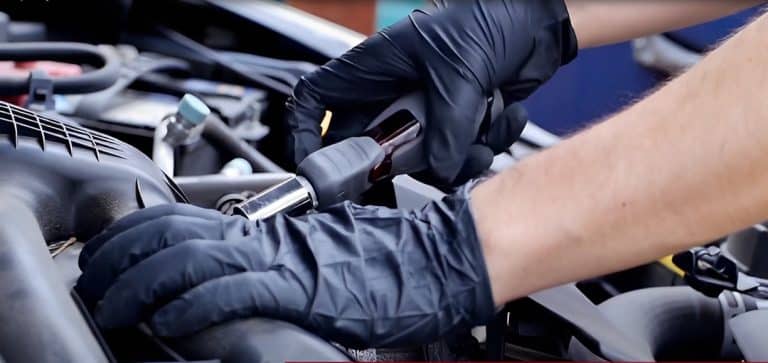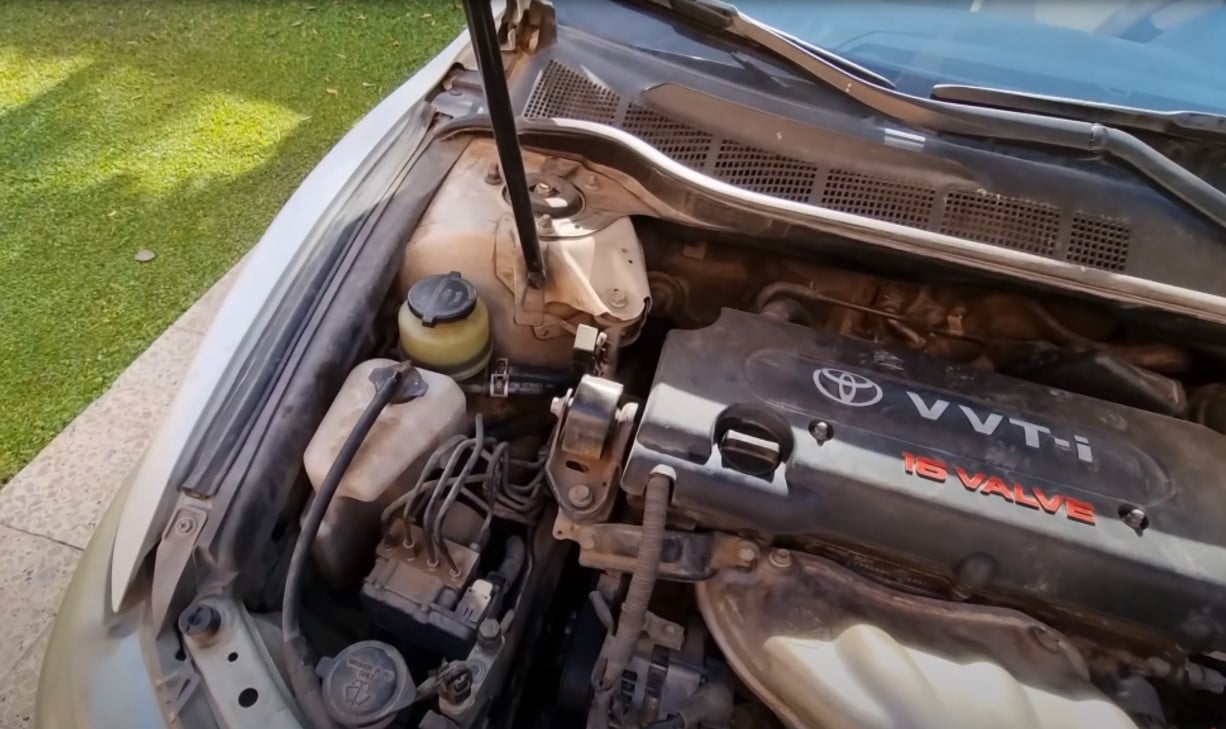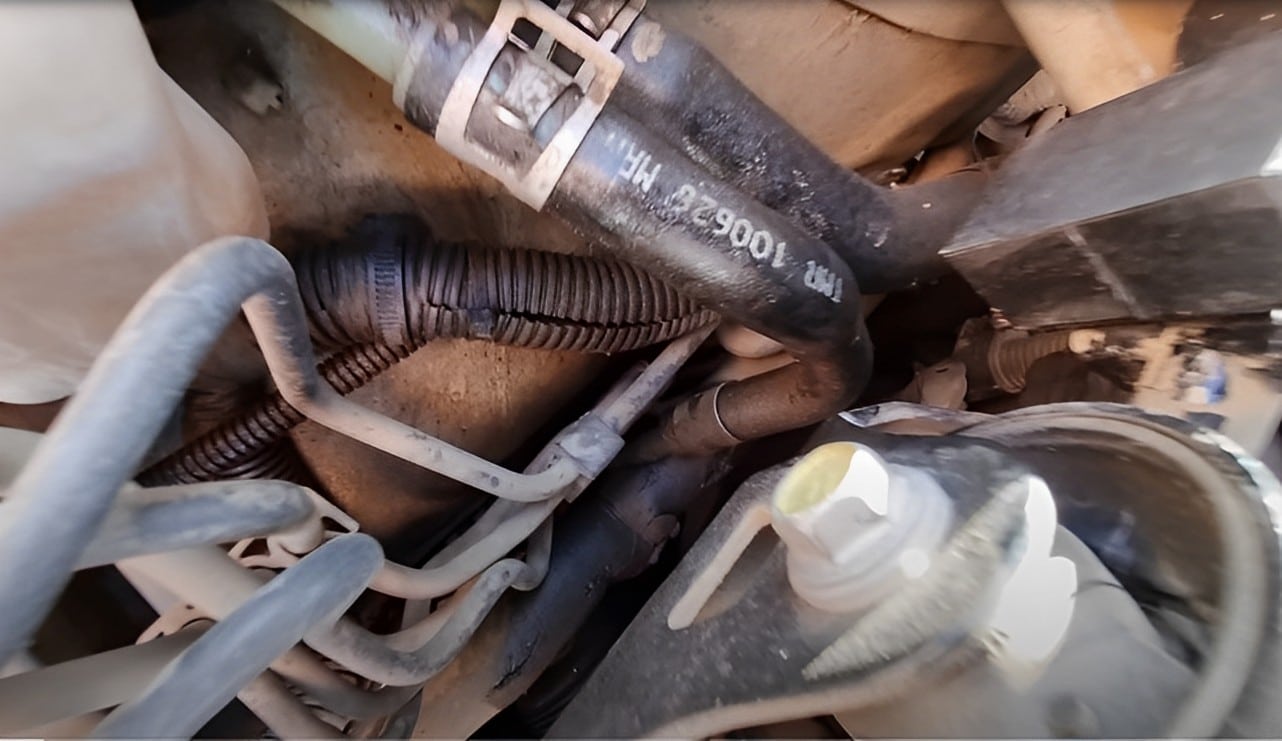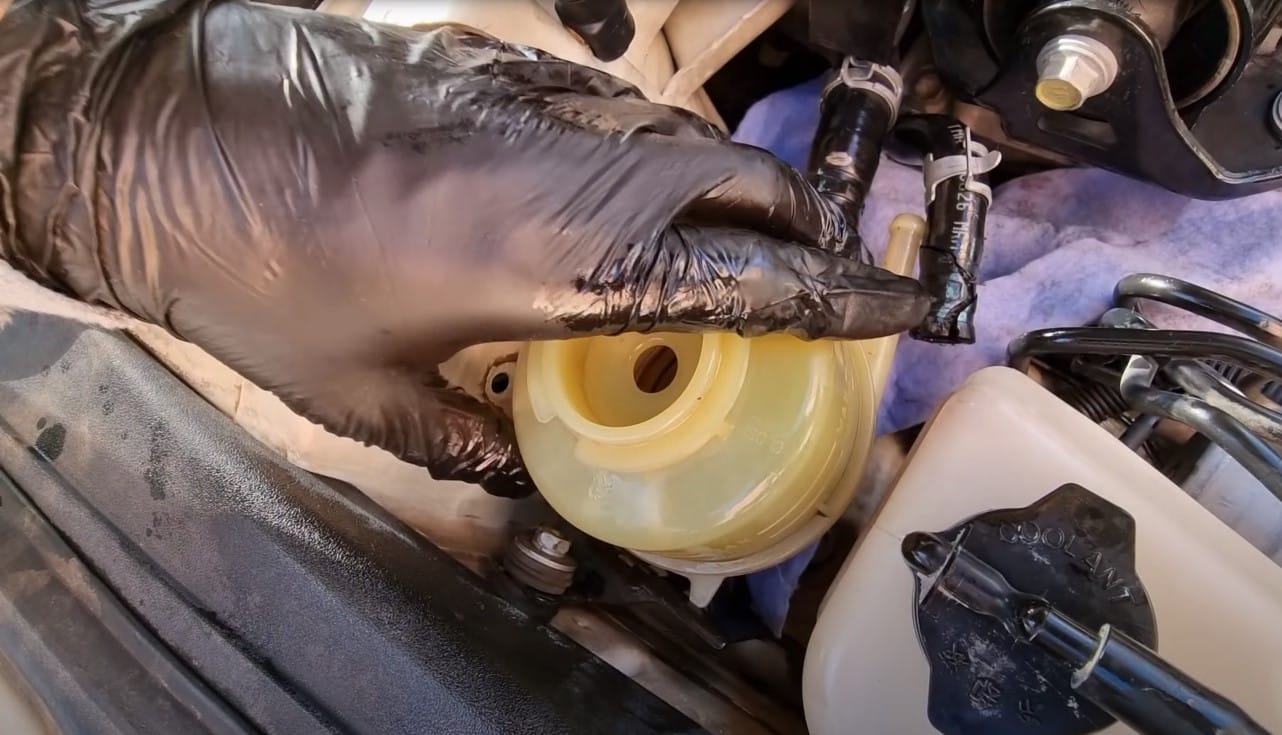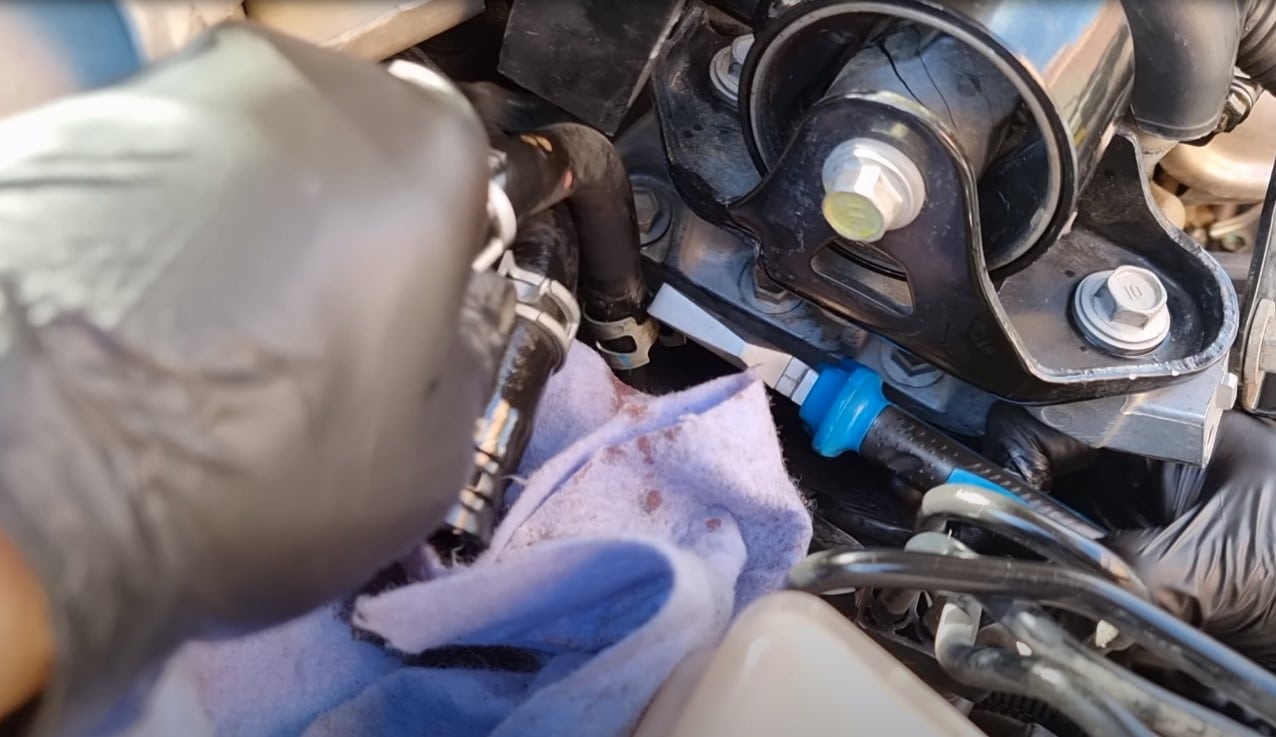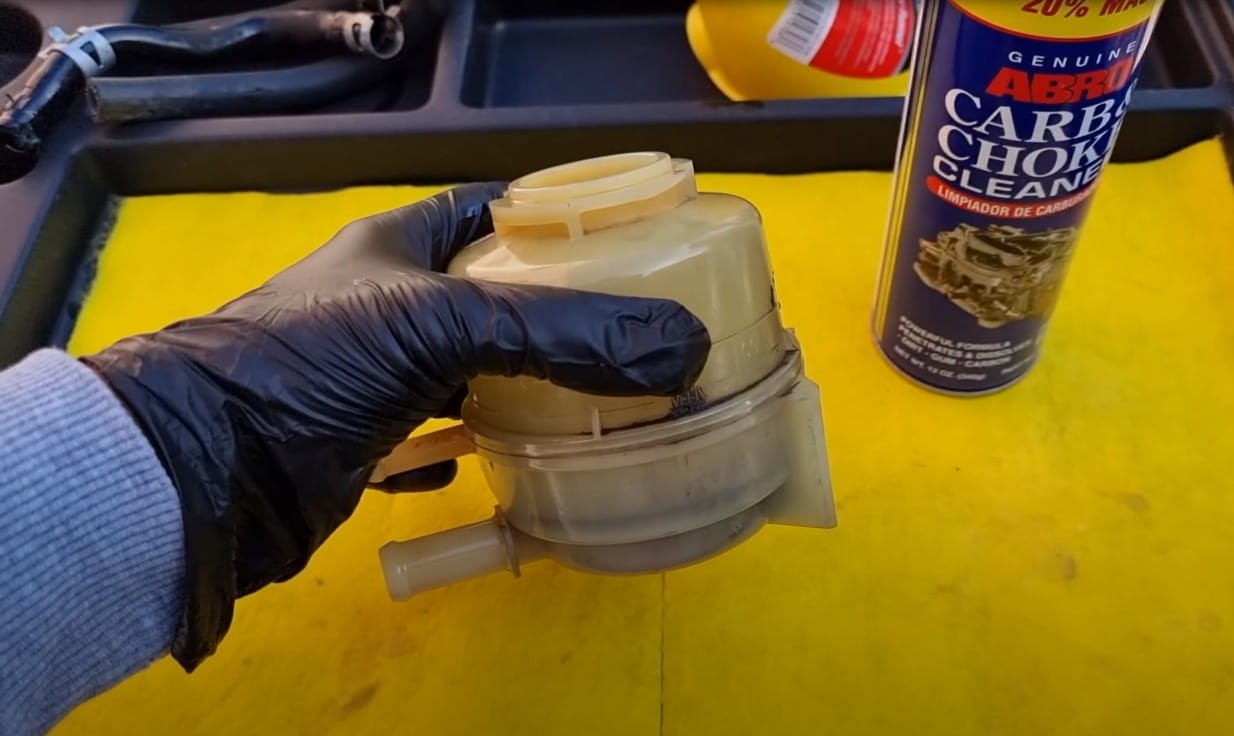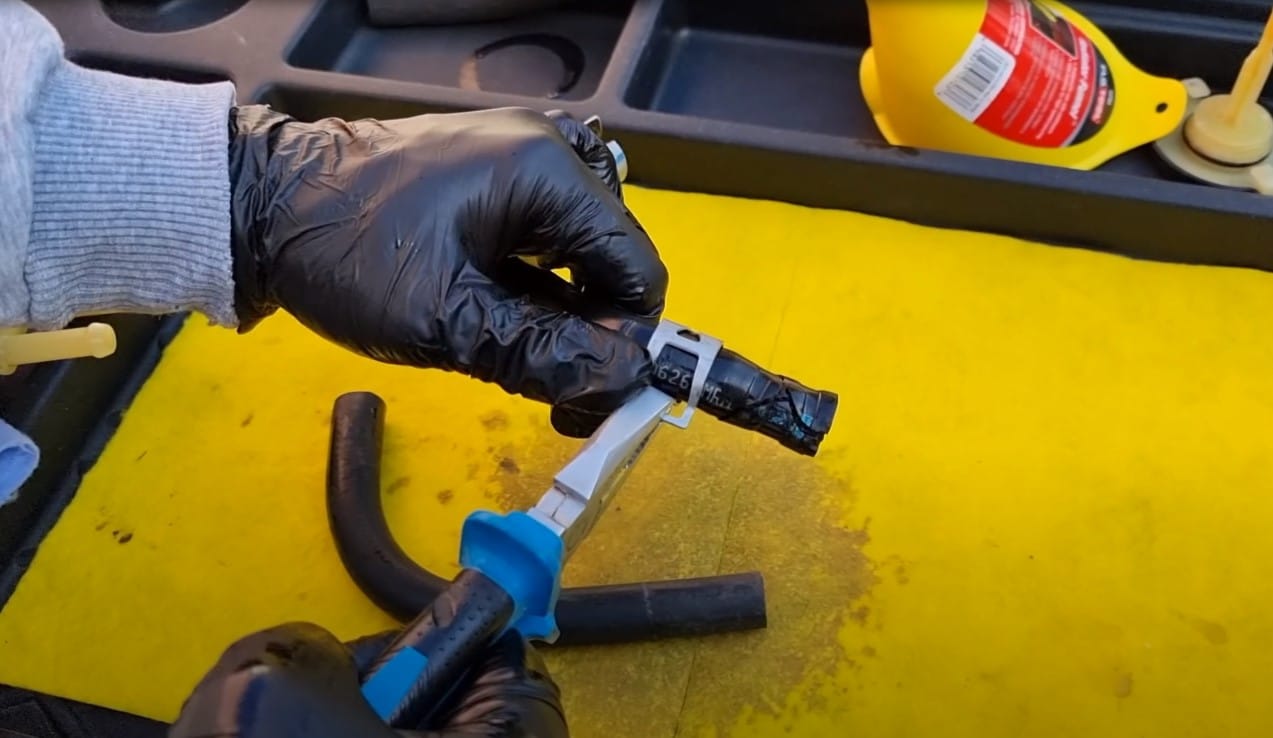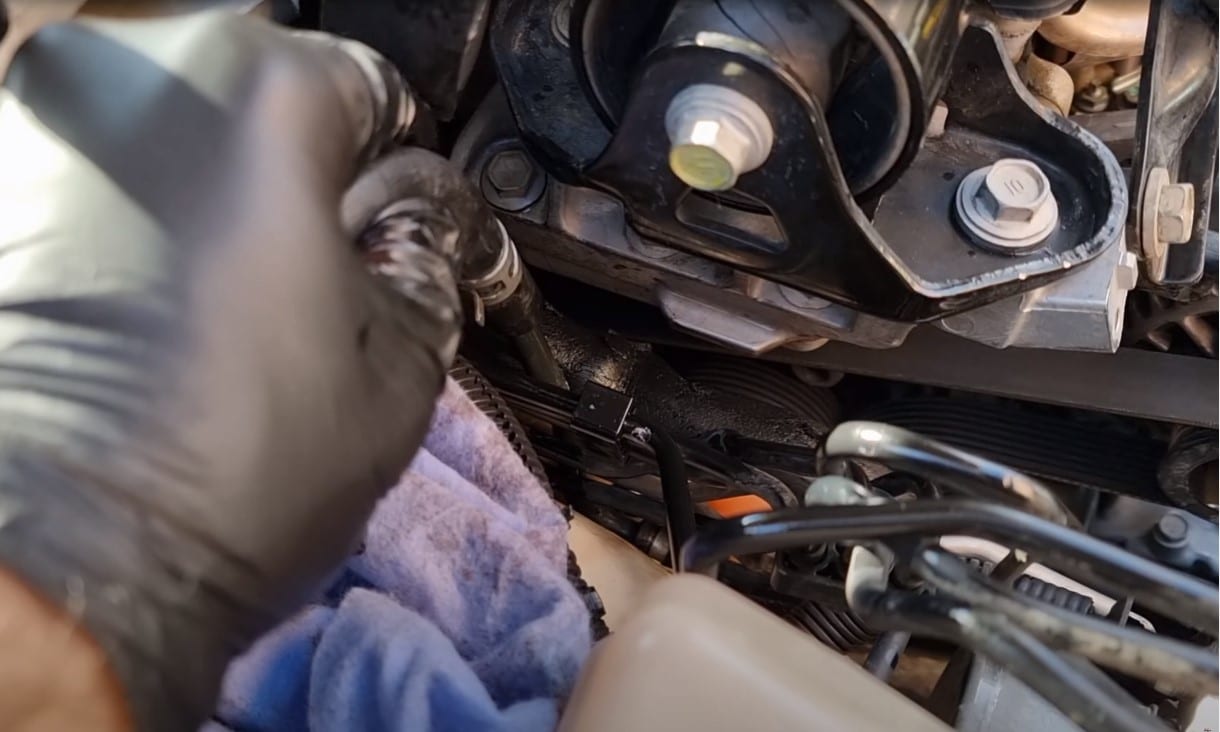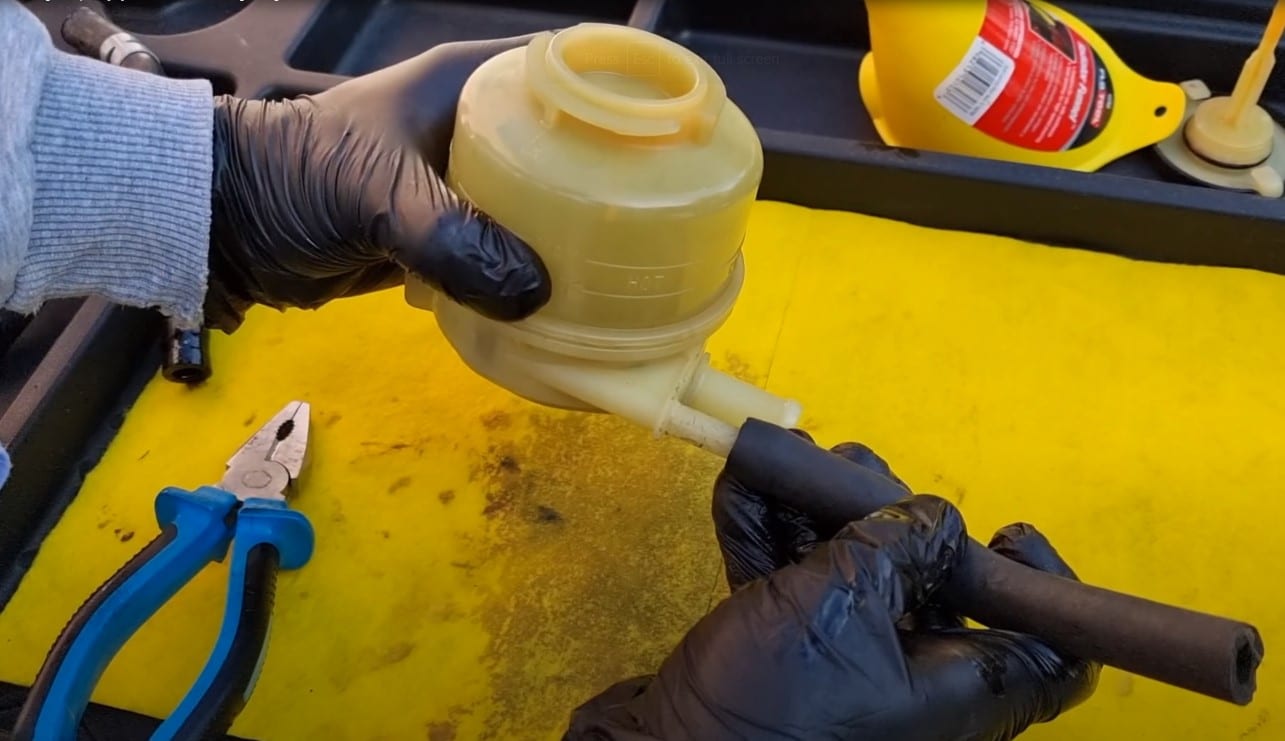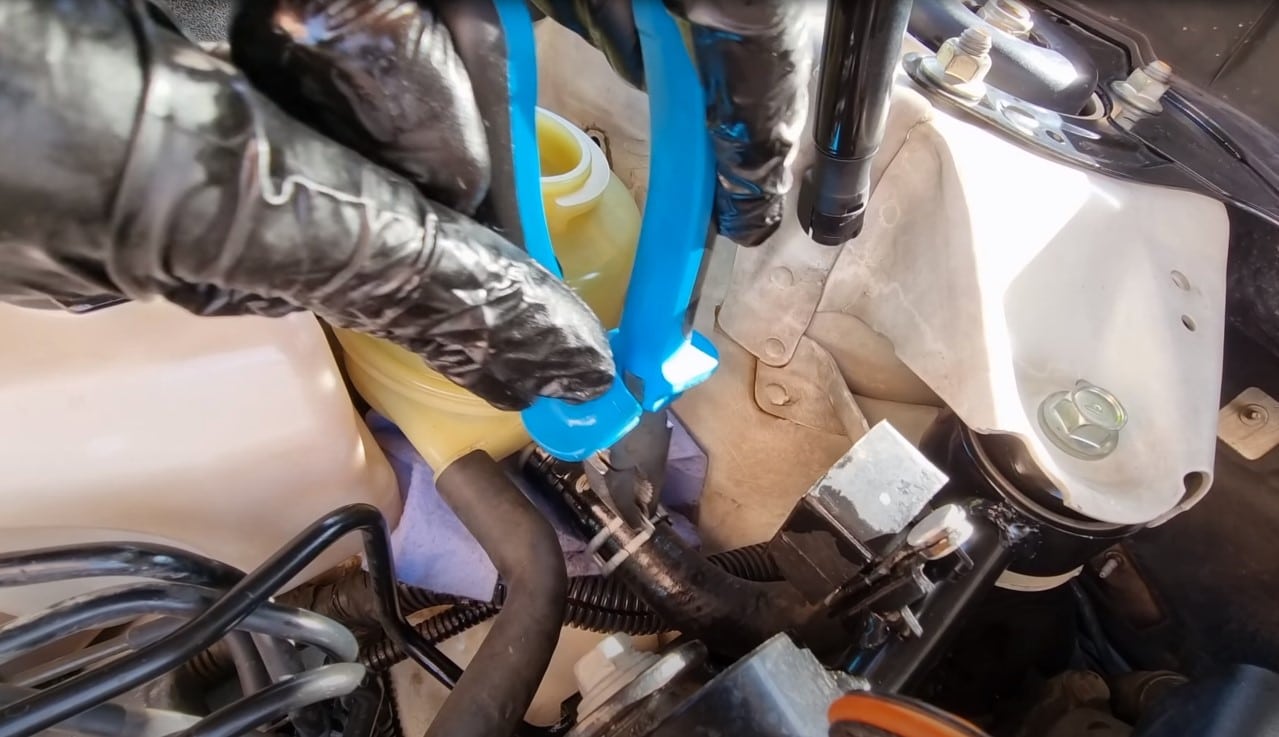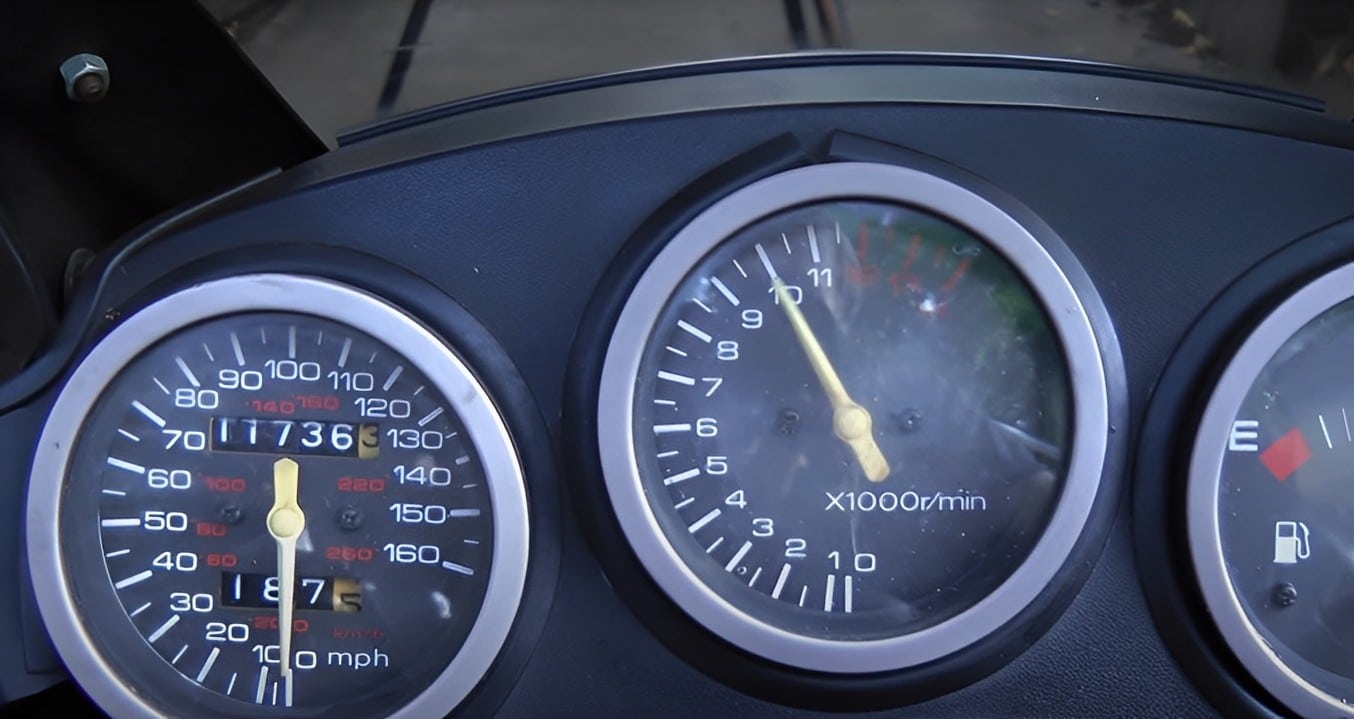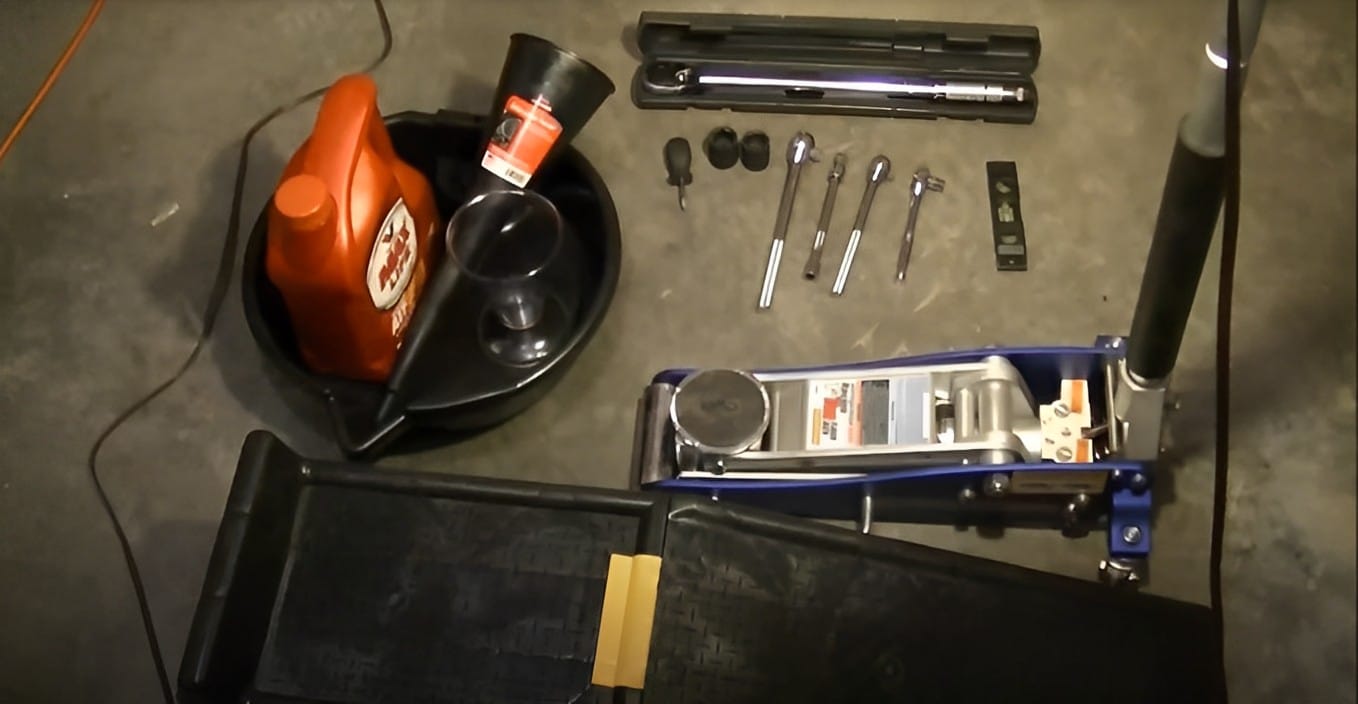Is power steering fluid the same as transmission fluid? This is a common question that many car owners ask when it comes to the fluids that are used in their vehicles. Fluids play a crucial role in the proper functioning of various systems in a car, such as a brake, transmissions, steering, and engine.
There are different types of fluids used in a car, including power steering fluid, transmission fluid, brake fluid, hydraulic fluid, and gear oil, each serving a specific purpose. These fluids contain various detergents, friction modifiers, and additives that work together to maintain the optimal temperature, pressure, and lubrication levels of the components they come in contact with.
In this article, we’ll explore the key differences between power steering fluid and transmission fluid, their properties, and how they work in the hydraulic power-steering system and transmission system of a car. Rich’s Body Shop will also discuss the importance of maintaining the correct fluid level, type, and color for your vehicle and answer some common car questions related to fluids and their use.
Is Power Steering Fluid The Same As Transmission Fluid?
Is power steering fluid the same as transmission fluid is a common question among car owners who want to know more about the different fluids used in their vehicles. While power steering fluid and transmission fluid share some similarities, there are key differences between the two.
A power steering fluid is a hydraulic fluid that is specifically designed for use in the hydraulic power-steering system of a car. It helps to transmit the hydraulic pressure from the power steering pump to the steering gear, allowing the driver to turn the steering wheel with ease. On the other hand, transmission fluid is used in the transmission system of a car to lubricate the gears and other components and to regulate the temperature and pressure.
Transmission fluid also contains friction modifiers and detergents that help to reduce wear and tear and maintain the optimal performance of the transmission system. While power steering fluid and transmission fluid may appear similar, they are designed to work in different systems and have different properties. It’s important for car owners to use the correct type of fluid for their vehicle and to maintain the correct fluid level and color over time to ensure optimal performance and prevent any potential damage or leaks.
You should find more useful knowledge about “Is Transmission Fluid Flammable?“
Can They Be Used Interchangeably?
No, power steering fluid and transmission fluid cannot be used interchangeably because they are designed for different purposes and have different properties. Power steering fluid is specifically designed for use in the hydraulic power-steering system, while transmission fluid is designed for use in the transmission system.
The two fluids have different viscosities, additives, and performance characteristics that are tailored to their respective systems. Using the wrong type of fluid can cause damage to the system, reduce performance, and potentially lead to leaks or other issues.
It’s important for car owners to follow the manufacturer’s recommendations and use the correct fluid for their vehicle’s power steering and transmission systems to ensure optimal performance and prevent any potential damage. In addition, it’s important to maintain the correct fluid level and color over time to ensure these systems are functioning properly.
Which One Should You Use For Your Car?
It’s important to always use the type of fluid that is recommended by your car’s manufacturer. You can find this information in your owner’s manual or by consulting a professional mechanic. Using the wrong type of fluid can cause damage to your vehicle’s transmission or power steering system and may void your warranty.
In general, automatic transmissions require automatic transmission fluid (ATF), which comes in different types and grades such as Dexron or Mercon. Manual transmissions typically use gear oil, which is thicker than ATF and designed to handle the heavier load and different operating conditions of manual transmissions. For power steering systems, there are different types of fluids available, including ATF and specific power steering fluids. It’s important to check your owner’s manual or consult a mechanic to determine which type is recommended for your vehicle.
When choosing a fluid, it’s also important to consider the age and condition of your vehicle. For example, older vehicles may require a different type of fluid than newer ones. Additionally, some fluids may contain additives that can help clean and protect your system, so it may be beneficial to choose a high-quality fluid with these additives if it’s within your budget. Ultimately, using the correct type of fluid and following the manufacturer’s recommendations can help ensure the longevity and proper functioning of your vehicle’s transmission and power steering system.
You can read more about “Type A Transmission Fluid Replacement“
How to Identify Power Steering Fluid and Transmission Fluid
Identifying power steering fluid and transmission fluid can be tricky, as both fluids have a similar appearance and can often be confused. Below, we will explain how to correctly identify each type of fluid, so you know what to look for when checking your vehicle’s fluids.
Check the color
Power steering fluid and transmission fluid are usually different in color. Power steering fluid is typically clear or a light amber color, while transmission fluid can range in color from red to brown to almost black.
Check the viscosity
Power steering fluid is usually thinner than transmission fluid, meaning it has a lower viscosity. The viscosity of each fluid can be checked with a dipstick and will vary depending on the type of fluid used.
Check for additives
Transmission fluids are often formulated with additional friction modifiers and detergents designed to reduce wear and tear and maintain the optimal performance of the transmission system. Power steering fluid does not typically contain these additives.
Check the manufacturer’s recommendations
It’s important to check your vehicle’s owner’s manual or with a mechanic for the specific type of power steering and transmission fluids used in your car. The type of fluid used will vary depending on your vehicle’s model and year, so it’s important to use the right type of fluid for your vehicle to get the best performance.
Check the location
Power steering fluid and transmission fluid are typically located in different parts of the car. Power steering fluid is usually located in a reservoir near the power steering pump or the steering gear, while transmission fluid is usually located in the transmission pan or a separate reservoir near the transmission.
Check the labeling
Power steering fluid and transmission fluid should be clearly labeled on their containers, so you can verify which one you are using or purchasing. Make sure to read the label carefully to ensure you are using the correct type of fluid for your car’s power steering and transmission systems.
In conclusion, power steering fluid and transmission fluid are two different types of fluids with different properties that are designed for use in specific systems. It’s important to use the right type of fluid and maintain the correct fluid level and color for optimal performance, otherwise, you risk damaging your car’s power steering or transmission system. To identify the correct fluids for your car, always consult your owner’s manual or a mechanic to make sure you are using the right type of fluid for the best performance.
Why Are Additives Added to Transmission Fluid?
Additives are added to transmission fluid to enhance its performance and provide additional benefits to the transmission system. These additives work together with the base oil to improve the fluid’s ability to lubricate, cool, and protect the transmission system’s components. Some of the most common additives added to transmission fluid include:
Friction modifiers
Friction modifiers are one of the most important additives in transmission fluid. They work by reducing friction between the moving parts of the transmission system. Friction generates heat, which can cause the transmission system’s components to wear out more quickly.
You may be also interested in “What Color Should Transmission Fluid Be?“
By reducing friction, the transmission operates more smoothly, and the components experience less wear and tear. This not only extends the lifespan of the transmission system but also helps to improve fuel efficiency.
Detergents and dispersants
Detergents and dispersants are additives that help keep the transmission clean by removing dirt, sludge, and other contaminants. These contaminants can build up over time and cause damage to the transmission system’s components, leading to reduced performance and even failure. Detergents and dispersants prevent the build-up of deposits on the transmission system’s components, which can cause damage and reduce performance. They help maintain the transmission system’s cleanliness, ensuring that it operates at its best.
Anti-wear agents
Anti-wear agents are additives that form a protective film on the transmission system’s components to prevent metal-to-metal contact. These agents help extend the life of the transmission system by reducing wear and tear. They are particularly important in automatic transmissions, which have a higher risk of wear and tear due to the complexity of their design.
Viscosity improvers
Viscosity improvers are additives that improve the fluid’s viscosity at different temperatures. Transmission fluid needs to maintain a certain viscosity to provide adequate lubrication and prevent damage to the transmission system’s components. Viscosity improvers help maintain the fluid’s flow properties over a wide range of temperatures, ensuring that the transmission operates smoothly in all conditions.
Seal conditioners
Seal conditioners are additives that help condition the transmission’s seals, keeping them soft and pliable to prevent leaks. Seals can become brittle over time, leading to leaks that can cause damage to the transmission system. Seal conditioners help extend the life of the transmission system by preventing fluid leaks and reducing the risk of damage due to low fluid levels.
It’s important to use the correct type of fluid for your car’s power steering and transmission systems to ensure optimal performance and prevent any potential damage or leaks. If you are unsure about which fluid to use or how to check the levels, consult your car’s manual or a qualified mechanic for guidance. They can also provide advice on how often to change the fluids and any other maintenance tips to keep your car running smoothly.
What Will Happen if I Put Power Steering Fluid in The Transmission?
Putting power steering fluid in the transmission can cause significant damage to the transmission and lead to costly repairs. Power steering fluid is not designed to work in transmission and does not have the necessary additives to provide the required lubrication and cooling for the transmission.
Read more: What Happens If You Drive On Low Transmission Fluid?
Transmission fluid is specifically designed to meet the high demands of transmission systems. It has a different viscosity and contains additives that are specifically formulated to protect the transmission from wear and overheating. The friction modifiers and detergents in transmission fluid help to reduce wear on the transmission components and keep the fluid clean.
If power steering fluid is used in the transmission, it may not provide the necessary lubrication and cooling, which can lead to increased friction, wear, and heat buildup. This can cause damage to the transmission’s components, such as the gears, clutch plates, and bearings. In severe cases, it can cause the transmission to overheat and fail completely.
It’s important to always use the recommended fluid for your transmission to ensure its proper functioning and prevent costly repairs. If you accidentally add power steering fluid to your transmission, it’s recommended to have a professional mechanic drain the fluid and replace it with the appropriate transmission fluid as soon as possible.
FAQs about Is Power Steering Fluid The Same As Transmission Fluid?
Can you replace the transmission fluid with the power steering fluid?
No, you should not replace the transmission fluid with the power steering fluid. Although both fluids may look similar, they serve different purposes and have different chemical compositions. Automatic transmission fluid (ATF) is specifically formulated to meet the requirements of automatic transmissions. In addition to lubricating the transmission’s moving parts, ATF also functions as a coolant, a cleaner, and a hydraulic fluid.
Is Dexron 3 the same as the power steering fluid?
No, Dexron 3 is not the same as a power steering fluid, but it can be used in some power steering systems. Dexron 3 is a type of automatic transmission fluid (ATF) that was developed by General Motors for use in their vehicles. It is a high-quality fluid that has been formulated to meet the specific requirements of automatic transmissions.
Can you still drive your car without power steering fluid?
Yes, you can still drive your car without power steering fluid, but it will become more difficult to turn the steering wheel, especially at low speeds. It’s not recommended to continue driving for an extended period of time without power steering fluid, as it can damage the power steering pump.
How do you know if you’re running low on power steering fluid?
You can check the power steering fluid level by locating the reservoir under the hood of your car. The reservoir is usually labeled and can be identified by the power steering pump’s hoses connected to it. The fluid level should be between the minimum and maximum marks on the dipstick. If it’s below the minimum mark, you’re running low on power steering fluid.
What happens if you ignore a power steering fluid leak?
If you ignore a power steering fluid leak, the fluid level in the reservoir will drop, causing the pump to run dry. This can lead to increased friction and heat, which can damage the power steering pump and other components. It’s important to fix power steering fluid leaks as soon as possible to avoid costly damage to your vehicle.
What color is the power steering fluid?
The color of the power steering fluid can vary depending on the manufacturer, but it is typically a red or pinkish color when it is new. As the fluid ages, it can turn into a reddish-brown color before eventually settling into a plain brown color. It is important to check the color of your power steering fluid periodically to ensure it is still in good condition.
What does it sound like when the power steering fluid is low?
If your power steering fluid is low, you may hear a high-pitched squealing noise while turning the steering wheel. This can be caused by air pockets in the system due to a lack of fluid. It’s important to check the power steering fluid level and top it off as needed to avoid damage to the pump or other components.
Can low transmission fluid cause power steering problems?
Yes, low transmission fluid can cause power steering problems. If your car is leaking transmission fluid, it may eventually lead to a drop in the power steering fluid level and you may notice the steering becoming a bit stiffer when turning the wheel. It’s important to keep an eye on both levels to prevent costly repairs.
How often should the power steering fluid be changed?
Power steering fluid should generally be changed every 40,000-80,000 miles, depending on the type of fluid your vehicle uses. It’s important to check with your owner’s manual or a mechanic to determine the correct interval for your vehicle. Changing the power steering fluid regularly will help ensure that your system is running properly and can help prevent costly repairs in the future.
What color is bad steering fluid?
If the power steering fluid has turned a dark black or brown color, it is likely bad and should be changed as soon as possible. Black or brown fluid indicates that the fluid has been contaminated with dirt, debris, or metal shavings. Changing the fluid can help protect other components in your vehicle’s system from damage.
What is the yellow fluid leaking from the front of my car?
The yellow fluid could most likely be coolant or antifreeze. Coolant is designed to help keep your engine from overheating and should never be ignored. If you notice a leak, it’s important to get it fixed as soon as possible to avoid any further damage.
Conclusion for Is Power Steering Fluid The Same As Transmission Fluid?
Is Power Steering Fluid The Same As Transmission Fluid is a common question that many car owners ask. While both fluids serve similar purposes in terms of lubrication and hydraulic pressure, they are not interchangeable. Automatic Transmission Fluid is specifically designed to function as a lubricant, coolant, and cleaner for the transmission system, while power steering fluid is meant to operate the hydraulic power steering system.
It’s crucial to use the correct type of fluid for each system, as using the wrong one can cause significant damage to your car’s engine and other components. Regularly checking and maintaining the fluid levels in both the power steering and transmission systems can help keep your car running smoothly and prevent costly repairs down the road.
In conclusion, it’s important to understand the differences between power steering fluid and transmission fluid and use the appropriate fluid for each system. If you’re unsure about which type of fluid to use, consult your car’s owner’s manual or a professional mechanic for guidance. And if you found this information helpful, please share this post with your friends and neighbors to help them keep their cars running smoothly too!

William Moore is an automotive specialist with two decades of experience, ready to give your car the care it needs. He understands all facets of auto maintenance and repair, from oil changes to brake jobs. Working with the latest tools and technologies, he provides complete service on all makes and models of cars. With his attention to detail and commitment to quality workmanship, you can expect excellent results.
